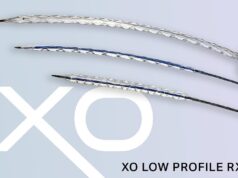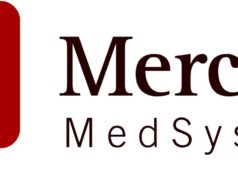BrightWater Medical has announced that the US Food and Drug Administration (FDA) has cleared the company’s ConvertX biliary stent system for the treatment of biliary obstructions.
Patients with severe duct blockages or difficult anatomies—such as gastric bypass or liver transplant patients—face serious complications including infection, sepsis, biliary cirrhosis or injury to the liver. Today, most of these patients will either need to undergo two separate one-hour interventional procedures for stent placement or, if considered poor candidates for the staged stent procedure, undergo a drain placement instead. If the biliary blockage is managed with a drain, the drain must be exchanged for a new one every two to three months, for life.
The ConvertX system is the first to provide interventional radiologists with a percutaneous plastic biliary stent option. The system is designed to eliminate the need for the second invasive procedure and the associated risk, cost, and time. Rather than a drain-to-stent exchange, the ConvertX system itself enables stent release in less than one minute during an in-office visit or at bedside without the need for sedation or repeated drain insertions, a press release explains.
“Before this, we have had to treat these serious cases without having the right tools,” explains Saher S Sabri, director of Interventional Radiology at MedStar Washington Hospital Center and professor of Radiology at MedStar Georgetown University Hospital (Washington, DC, USA). “The ConvertX is a significant paradigm change that enables the interventional radiologist to be involved in percutaneous temporary plastic stent placement for benign and malignant biliary disease. It allows us to treat with one less invasive procedure for the patient, reducing radiation exposure for the patient and staff.”
Biliary obstructions may be caused by tumours, gallstones, enlarged lymph nodes, cysts or strictures. Interventional radiologists treat biliary obstructions that are more severe or anatomically challenging, such as in patients with gastric bypass or liver transplants, through two separate one-hour interventional procedures for stent placement.
“The biliary stent system was designed by interventional radiologists for interventional radiologists,” comments ConvertX system developer Bob Smouse, founder and CEO of BrightWater Medical and professor of Radiology and Surgery at the University of Illinois College of Medicine (Chicago, USA). “It is simple to use and deliver with standard interventional techniques and does not require additional physician training. Before the ConvertX, the absence of a percutaneous plastic stent was a huge product gap in the device armamentarium of the interventional radiologist. According the American College of Radiology practice guidelines, a temporary plastic stent is the device-of-choice in eight out of nine bile duct blockages and now the interventional radiologist has that stent option.”
The ConvertX biliary stent system is part of BrightWater Medical’s ConvertX stent family, which includes the company’s ConvertX Nephroureteral stent system cleared by the FDA for treatment of ureteral obstructions. That system enables the interventional radiologist to eliminate a second invasive interventional procedure in treating patients with severe ureteral blockages.













